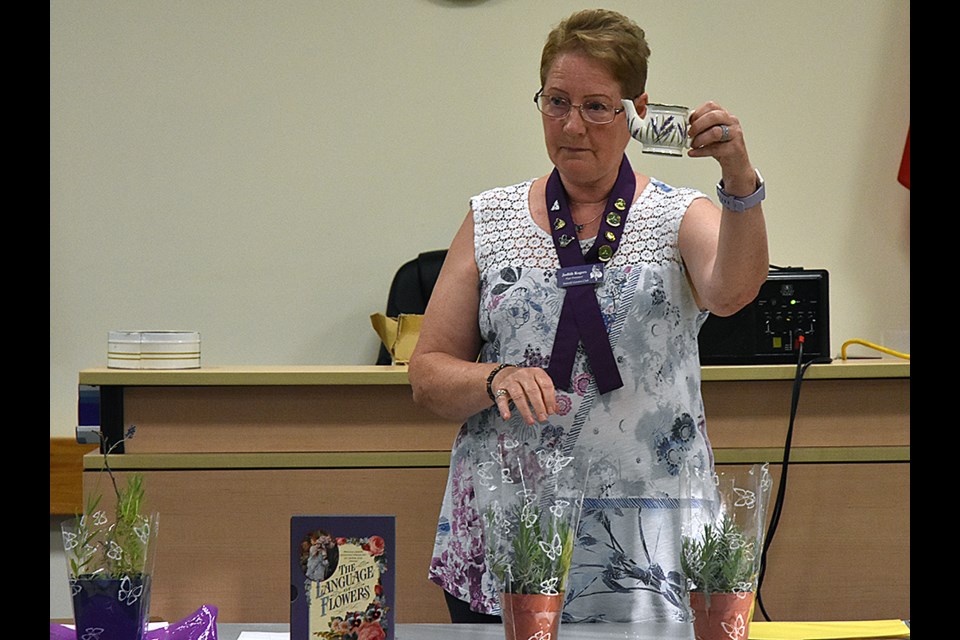Master Gardener Judith Rogers loves lavender, a fragrant herb.
A member of the mint family, lavender has long been grown for its sweet scent and soothing properties, and it is still “a great English or cottage garden plant,” Rogers said.
Native to the Mediterranean, lavender thrives in full sun and dry conditions. She brought samples of each to a recent Innisfil Gardening Club meeting to give away.
Guests at the meeting could win plants, lavender sachets, books, and even a small pitcher decorated with lavender by taking Rogers’ lavender trivia quiz.
Filled with historical lore and uses – for instance, lavender was spread on floors in medieval times to eliminate vermin, and included in soldiers’ kits in the First World War to soothe burns – the quiz triggered laughter and plenty of wrong answers.
Rogers also provided tips on the growing and care of lavender. When winter is over and the snow melts, lavender may look like little more than a collection of dead stems.
“Don’t be afraid to cut it,” she urged. Wait until new shoots appear, then cut back the old growth ruthlessly.
Blooms should be harvested “when a quarter of the flowers are open,” Rogers said, noting they can be used in bouquets, or hung in bunches in a cool, dark space, to dry over a span of two weeks. And once flowering is finished, cut off the flowering heads to encourage re-blooming.
Lavender is used in cooking, in perfumes and soaps, and its medicinal uses have long been known. As an essential oil – another bit of trivia: it takes 80 pounds of lavender to make one ounce of oil – lavender soothes migraines and headaches.
Rogers provided another tip for keeping away mosquitoes: pick the flowers, and rub them on the skin.
“Lavender is always a good insect repellent,” she said. “It does work.”
After an evening of tips and questions, Rogers concluded, “I hope, if you’re not growing lavender, you’ll give it a try!”
Rogers also mentioned the “language of flowers” – the symbolic meaning ascribed to blooms. Lavender, she said, stands for affection, but also for distrust. According to folklore, poisonous asps may make their home underneath lavender, definitely something to distrust.
